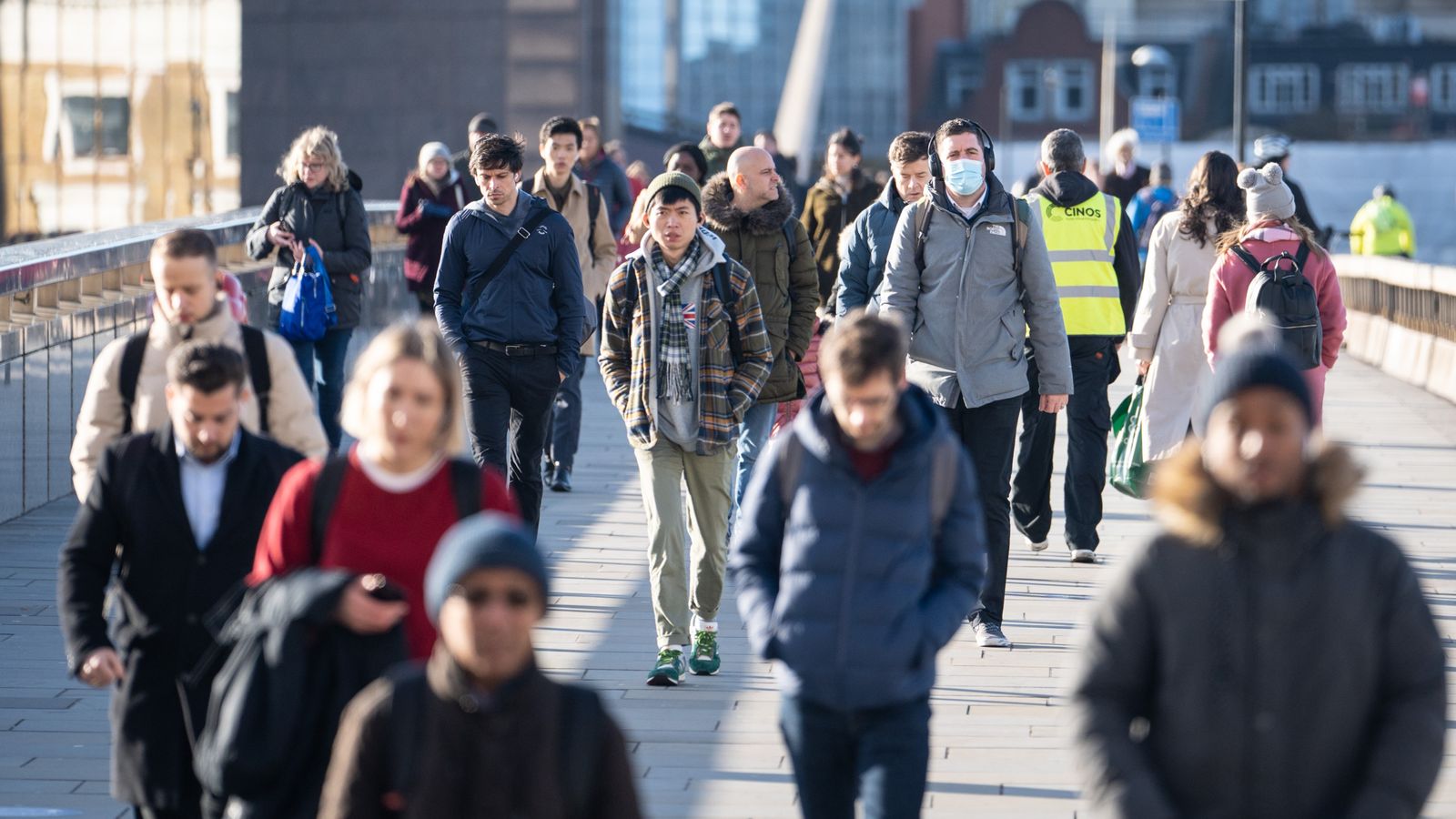COVID-19 cases have surged by nearly half in a week, official figures show.
Last week, an estimated 1,415,600 people had coronavirus in the UK, up 425,800 or 43%.
This is the highest estimate for infections since the start of May, but is still well below the record high of 4.9 million at the end of March.
Cases rose in all four nations of the UK – and increased across all ages groups.
In England, around one in 50 people had the virus, according to the coronavirus infection survey by the Office for National Statistics.
In Wales and Northern Ireland, one in 45 were positive, and in Scotland one in 30 had the virus.
The rise is likely to have been caused by the Omicron variants BA.4 and BA.5.
COVID-19: Beijing tests millions and puts thousands in lockdown after ‘ferocious’ outbreak at 24-hour bar
COVID-19: Infections increase in UK for the first time in two months
Prisons criticised over inmates doing little but watching daytime TV and sleeping
Omicron BA.1 is the original variant of Omicron that saw infections surge across the UK around in December and early January this year – followed by a second wave driven by sub-variant BA.2 in around March.
While BA.2 still makes up most UK infections, the emergence of BA.4 and BA.5 in May is effectively another wave.
Newer variants, BA.4 and BA.5, were recently classified as “variants of concern” by the UK Health Security Agency (UKHSA).
Follow the Daily podcast on Apple Podcasts, Google Podcasts, Spotify, Spreaker
Initial research indicates BA.4 and BA.5 variants have a degree of “immune escape” – meaning the immune system can no longer recognise or fight the virus.
This is likely to contribute to their dominance over BA.2, according to the UKHSA.







